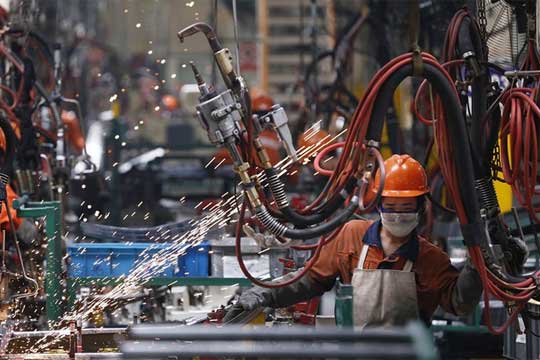In his opening speech at China’s annual National People’s Congress in Beijing last week, Premier Li Keqiang highlighted a new strategic plan, called “Made In China 2025”, to reform and reinvigorate Chinese industry over the next ten years around the country’s own smart manufacturing initiative.”We will implement the ‘Made in China 2025’ strategy, seek innovation-driven development, apply smart technologies, strengthen foundations, pursue green development and redouble our efforts to upgrade China from a manufacturer of quantity to one of quality”, said Li.
The Chinese government is clearly acknowledging here that previous industrial promotion measures, predominantly based on low labor costs, have started to run into problems. In the past, manufacturers around the world outsourced to China to benefit from these lower costs, but the minimum wage has since soared more than 50% over the past five years in major cities like Beijing and Shanghai. In addition, the digitization of China’s manufacturing industries over the past decade has only been applied in a few select areas. Recent developments in revolutionary new smart manufacturing technologies such as Big Data, cloud computing, mobility, the Internet of Things and the Industrial Internet now promise to change the global manufacturing game across all sectors.
The aim
Overall, the aim of this new strategy is to put China on a par with other industrialized countries such as the U.S. and Germany where initiatives like the German government’s Industry 4.0 strategy, the U.S. network of Manufacturing Innovation Institutes, GE’s Industrial Internet Consortium and the Smart Manufacturing Leadership Coalition all aim to accelerate the adoption of digital technologies and advanced production approaches across national manufacturing industries. A further motivation behind China’s new national plan is the recognition that the country’s economic growth rates are also unlikely to hit the high peaks of the last decade. “The downward pressure on China’s economy is intensifying,” Li told the 3,000 delegates gathered in the Great Hall of the People on Beijing’s Tiananmen Square. “Deep-seated problems in the country’s economic development are becoming more obvious. The difficulties we are facing this year could be bigger than last year.”
Why push for smart manufacturing in China?
Li’s national economic growth target for this year is now around 7 percent, below the 7.5 percent goal the country narrowly missed in 2014. China’s manufacturing sector has also seen stagnant growth over the last few months. The latest manufacturing Purchasing Mangers’ Index for February 2015 showed a figure of just 50.1, only slightly over the 50 threshold that marks the difference between growth and contraction. This is the first time the Chinese manufacturing sector has signaled an improvement in operating conditions since last October. At this stage, specific details of Li’s new Made In China 2025 plan remain unclear, but in overall terms it calls for a move away from simple, labor-intensive production to a create a more sophisticated, high-value manufacturing sector. It is designed to promote more local research and development, includes new measures favoring high-tech industries, and seeks to encourage technological advancement and the rise of new industrial sectors in the country.
For example, China’s Minister of Industry and Information Technology, Miao Wei, also announced plans at last week’s Beijing Congress to encourage local Internet companies, such as Leshi Corp., to develop electric vehicles (EVs) as part of an effort to create a new manufacturing model for the Chinese auto industry. China is now planning to promote the use of electric vehicles to reduce the reliance on imported oil and to cut exhaust pollution. This move will allow companies outside its traditional, and heavily-regulated, manufacturing industries to develop EVs as a way to inject innovation and spur competition. The new Beijing Made in China government plan also seeks to “turn key industrial areas”, such as telecommunications networks, semiconductors, alternative energy, new materials, biotechnology, aircraft engines, and gas turbines into leading industries that can succeed globally, according to Li, and will encourage the development of a more “value-added” industry strategy, by installing new technologies such as industrial robots in the nation’s factories.
Government to provide financial support
The government will also provide some financial support to help drive this manufacturing transformation, setting aside a 40 billion yuan ($6.38 billion) fund for emerging industries and creating a private-equity market for small and midsize enterprises. As predicted in an earlier blog in these pages “Manufacturing Trends to Watch in 2015”, the “Made in China 2025” smart manufacturing strategy is likely to be just one of a number of new national industry initiatives this year as ambitious governments around the world recognize the need to drive transformation faster to maintain and improve global manufacturing competitiveness and sustain economic growth.
Manufacturing in China obviously has a very bright future a head of it with the development of the ‘Made in China 2025’. Have you ever thought about manufacturing your product in China? Contact us at China2West to make your manufacturing dreams a reality


